Exploring cancer metastasis prevention strategy: interrupting adhesion of cancer cells to vascular endothelia of potential metastatic tissues by antibody-coated nanomaterial
- PMID: 25643843
- PMCID: PMC4320453
- DOI: 10.1186/s12951-015-0072-x
Exploring cancer metastasis prevention strategy: interrupting adhesion of cancer cells to vascular endothelia of potential metastatic tissues by antibody-coated nanomaterial
Abstract
Background: Cancer metastasis caused by circulating tumor cells (CTCs) accounts for 90% cancer-related death worldwide. Blocking the circulation of CTCs in bloodstream and their hetero-adhesion to vascular endothelia of the distant metastatic organs may prevent cancer metastasis. Nanomaterial-based intervention with adhesion between CTCs and endothelia has not been reported. Driven by the novel idea that multivalent conjugation of EpCAM and Slex antibodies to dendrimer surface may enhance the capacity and specificity of the nanomaterial conjugates for capturing and down-regulating colorectal CTCs, we conjugated the dendrimer nanomaterial with the EpCAM and Slex antibodies, and examined the capacity of the dual antibody-coated nanomaterial for their roles in interrupting CTCs-related cancer metastasis.
Results: The antibody-coated nanomaterial was synthesized and characterized. The conjugates specifically bound and captured colon cancer cells SW620. The conjugate inhibited the cells' viability and their adhesion to fibronectin (Fn)-coated substrate or human umbilical vein endothelial cells (HUVECs) in a concentration-dependent manner. In comparison with SW480 and LoVo cell lines, the activity and adhesion of SW620 to Fn-coated substrate and HUVECs were more specifically inhibited by the dual antibody conjugate because of the higher levels of EpCAM and Slex on SW620 cell surface. The hetero-adhesion between SW620 and Fn-coated substrate, or HUVECs was inhibited by about 60-70%. The dual conjugate showed the inhibition capacity more significant than its corresponding single antibody conjugates.
Conclusions: The present study provides the new evidence that coating nanomaterials with more than one antibody against CTCs may effectively interfere with the interaction between SW620 and HUVECs.
Figures
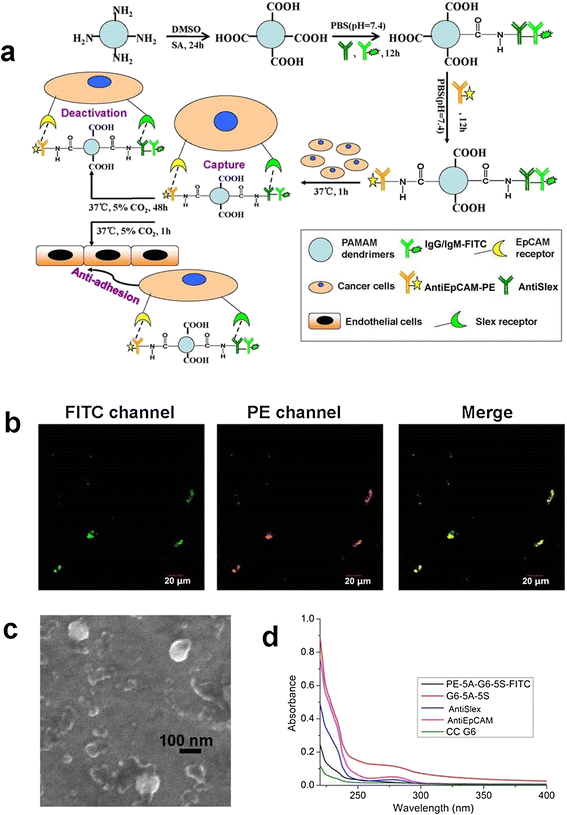
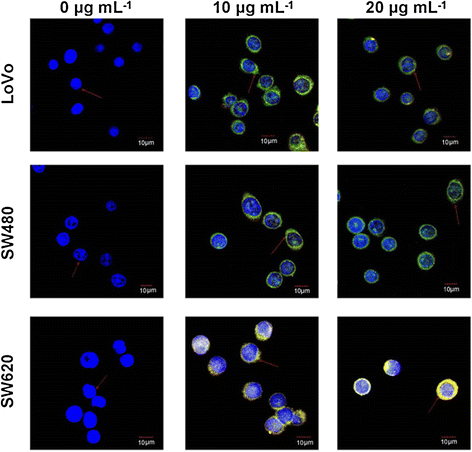
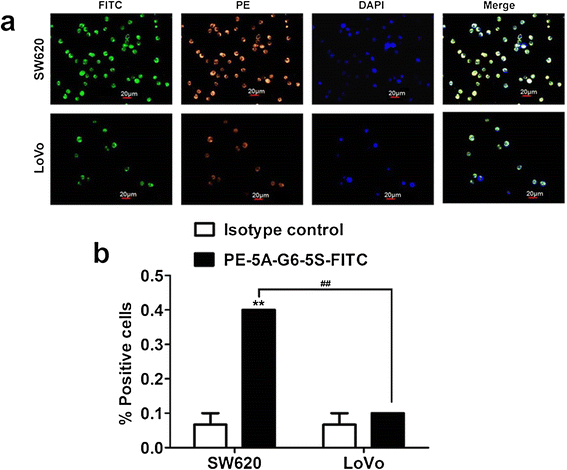
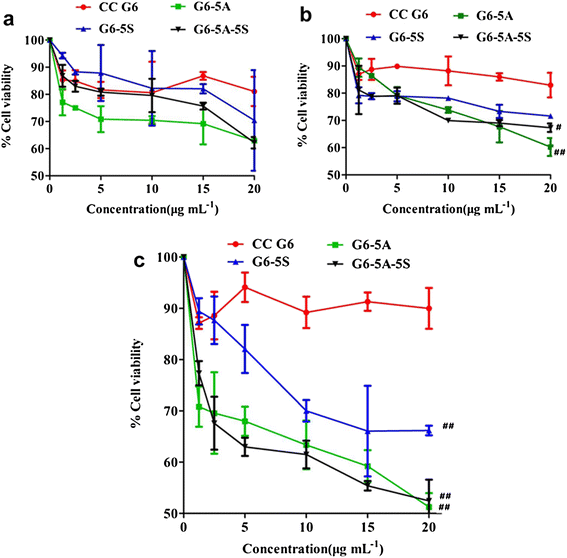
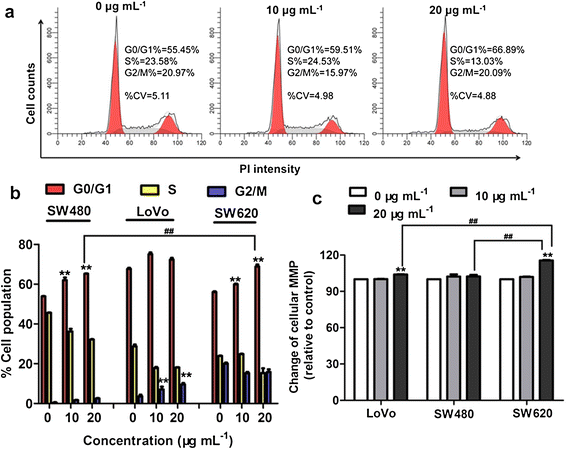
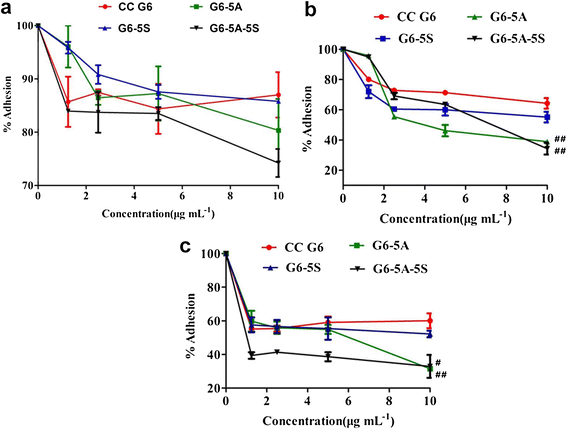
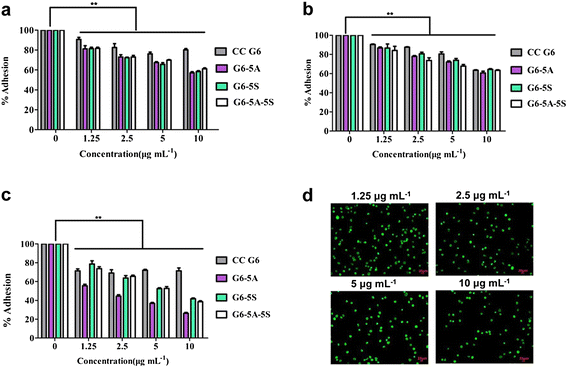
Similar articles
-
The architecture and biological function of dual antibody-coated dendrimers: enhanced control of circulating tumor cells and their hetero-adhesion to endothelial cells for metastasis prevention.Theranostics. 2014 Sep 26;4(12):1250-63. doi: 10.7150/thno.8775. eCollection 2014. Theranostics. 2014. PMID: 25285173 Free PMC article.
-
Ex vivo and in vivo capture and deactivation of circulating tumor cells by dual-antibody-coated nanomaterials.J Control Release. 2015 Jul 10;209:159-69. doi: 10.1016/j.jconrel.2015.04.036. Epub 2015 Apr 28. J Control Release. 2015. PMID: 25933713
-
Nitric oxide inhibits hetero-adhesion of cancer cells to endothelial cells: restraining circulating tumor cells from initiating metastatic cascade.Sci Rep. 2014 Mar 11;4:4344. doi: 10.1038/srep04344. Sci Rep. 2014. PMID: 24614329 Free PMC article.
-
Nanomaterial-Based Strategies for Preventing Tumor Metastasis by Interrupting the Metastatic Biological Processes.Adv Healthc Mater. 2024 Jul;13(17):e2303543. doi: 10.1002/adhm.202303543. Epub 2024 Mar 8. Adv Healthc Mater. 2024. PMID: 38411537 Review.
-
EpCAM duality becomes this molecule in a new Dr. Jekyll and Mr. Hyde tale.Crit Rev Oncol Hematol. 2018 Jun;126:52-63. doi: 10.1016/j.critrevonc.2018.03.006. Epub 2018 Mar 21. Crit Rev Oncol Hematol. 2018. PMID: 29759567 Review.
Cited by
-
Aspirin, lysine, mifepristone and doxycycline combined can effectively and safely prevent and treat cancer metastasis: prevent seeds from gemmating on soil.Oncotarget. 2015 Nov 3;6(34):35157-72. doi: 10.18632/oncotarget.6038. Oncotarget. 2015. PMID: 26459390 Free PMC article.
-
Nano Meets Micro-Translational Nanotechnology in Medicine: Nano-Based Applications for Early Tumor Detection and Therapy.Nanomaterials (Basel). 2020 Feb 22;10(2):383. doi: 10.3390/nano10020383. Nanomaterials (Basel). 2020. PMID: 32098406 Free PMC article. Review.
-
The paradigm-shifting idea and its practice: from traditional abortion Chinese medicine Murraya paniculata to safe and effective cancer metastatic chemopreventives.Oncotarget. 2016 Apr 19;7(16):21699-712. doi: 10.18632/oncotarget.7932. Oncotarget. 2016. PMID: 26959747 Free PMC article.
-
Warfarin and coumarin-like Murraya paniculata extract down-regulate EpCAM-mediated cell adhesion: individual components versus mixture for studying botanical metastatic chemopreventives.Sci Rep. 2016 Aug 2;6:30549. doi: 10.1038/srep30549. Sci Rep. 2016. PMID: 27480614 Free PMC article.
-
Nanoparticles as a novel key driver for the isolation and detection of circulating tumour cells.Sci Rep. 2024 Sep 29;14(1):22580. doi: 10.1038/s41598-024-67221-4. Sci Rep. 2024. PMID: 39343959 Free PMC article. Review.
References
Publication types
MeSH terms
Substances
LinkOut - more resources
Full Text Sources
Other Literature Sources
Miscellaneous

